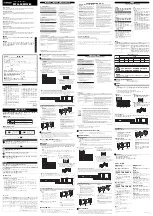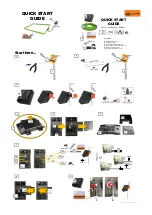
r
Disconnected Power supply module
5
will be signalled by:
Ø
the
Switching not connected on Power station
event (refer to “Events and Actions”);
Ø
the ON status of the
G
LED on the keypads, and the
Swtch.disc.pw.s
message (refer “View Trouble
Mode” in the USER MANUAL);
Ø
the Event details in the log:
DESCRIPTION
— Swtch.disc.pw.s;
WHERE
— The Power Station label.
r
Current draw of a Power station output that exceeds
the maximum will be signalled by:
Ø
the
Short circuit output 1/2/3 on Power Station
event (refer to “Events and Actions”);
Ø
the ON status of the
G
LED on the keypads, and the
Out. short pw.s
message (refer “View Trouble
Mode” in the USER MANUAL);
Ø
the Event details in the log:
DESCRIPTION
— Out. short pw. s.
WHERE
— The Power Station label.
r
Low voltage on the power output (less than 10.6 V) is
signalled by
2
:
Ø
the
Low Voltage on Main Power
event (refer to
“Events and Actions”);
Ø
the ON status of the
G
LED on the keypads, and the
PS1
low Vout
message, for Power Station No. 1
(refer “View Trouble Mode” in the USER MANUAL).
r
Low voltage on the auxiliary outputs (less than
10.6 V) is signalled by:
Ø
the
Low Voltage on Output 1
(
2
or
3
) event (refer to
“Events and Actions”);
Ø
the ON status of the
G
LED on the keypads, and the
PPS1
Vout1 LOW
message, for Output
O1
of
Power Station No. 1 (refer “View Trouble Mode” in
the USER MANUAL).
Wireless Module
The
Wireless Module
option group is for enrolling wire-
less devices, and setting related options.
+
When you manually enroll wireless devices, to
complete enrolment, press the enrolling button of
the wireless device until the device’s LED turns
yellow.
+
To enroll and set options for keyfobs, go to
Users
>
Keysfobs
option group.
3
In order to comply with EN 50131 Grade 3 stan-
dards, wireless devices may NOT be used or, at
most, can be used in Grade 2 subsystems.
The control panel detects the following events, and re-
ports them as indicated in Table 8.
Ø
Device fault: the device enrolling process is not com-
plete, or 15 minutes has expired since the last com-
munication of the device.
Ø
Device lost: the Wireless Supervisory Window has
expired since the last communication of the device.
Ø
Tamper: the device was opened, or removed from
the mounting surface.
Ø
Low battery: the device battery is running low and
needs to be changed as soon as possible.
Ø
AC fault: problems with the auxiliary power supply of
the device.
n
General
The
General
option group is for transceiver enrolling
and option setting, as described below.
Enrolled Wireless Receiver
Enable this option to in-
dicate to the control panel that the transceiver is con-
nected to the control panel.
Default:
Disabled.
If this option is enabled and the control panel cannot
communicate with the transceiver, the control panel sig-
nals the transceiver lost, as shown in Table 8: see de-
vice lost.
Wireless Supervisory Window
This option applies to
supervised wireless detectors (see the
Supervision
op-
tion in the
Wireless Module
>
Wireless Detectors
option
group), wireless sirens and repeaters. The transceiver
resets the
Wireless Supervisory Window
every time it
receives a valid signal from the wireless device:
Ø
If the transceiver does not receive a valid signal from
a wireless detector in the
Wireless Supervisory Win-
dow
, the control panel generates the
Loss of Wireless
Detector
event relating to the lost detector;
ABSOLUTA Plus
PROGRAMMING FROM THE PC
45
5
The Power station will disconnect the Power supply module if its output voltage reaches 0.5V above the preset
value.This operation will prevent damage to the peripherals. The power to the peripherals will be provided by the
Power station battery. If the Power station is not equipped with a Thermal probe, the preset output voltage will be 13.8
V. If the Power station is equipped with a Thermal probe, the output voltage will depend on the probe temperature.
Содержание Bentel Security tyco ABS128M50
Страница 14: ...14 Expandable Hybrid Control Panel...
Страница 98: ...98 Expandable Hybrid Control Panel...
















































